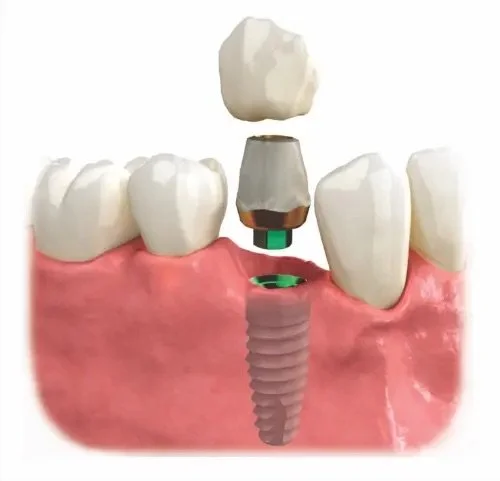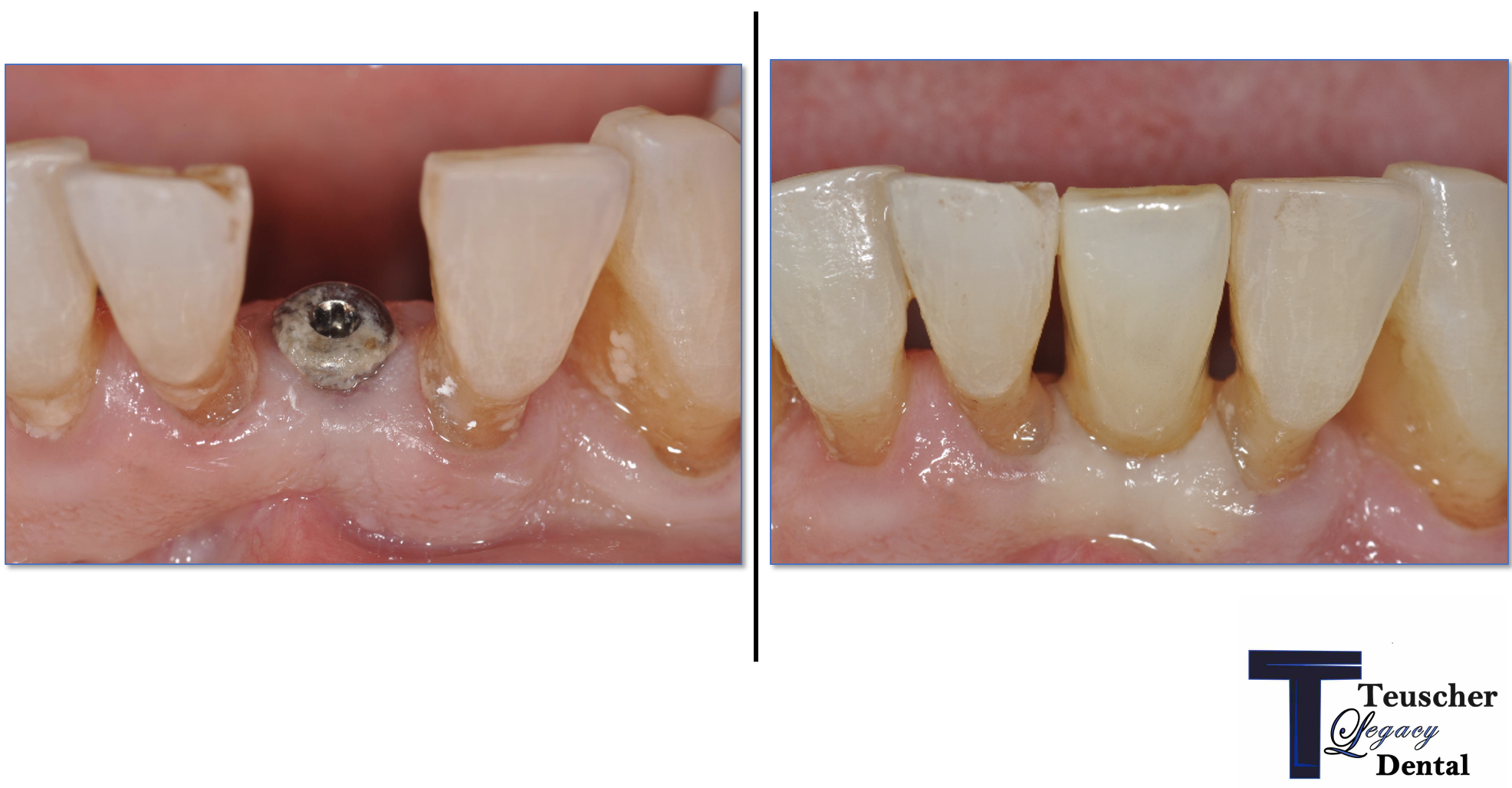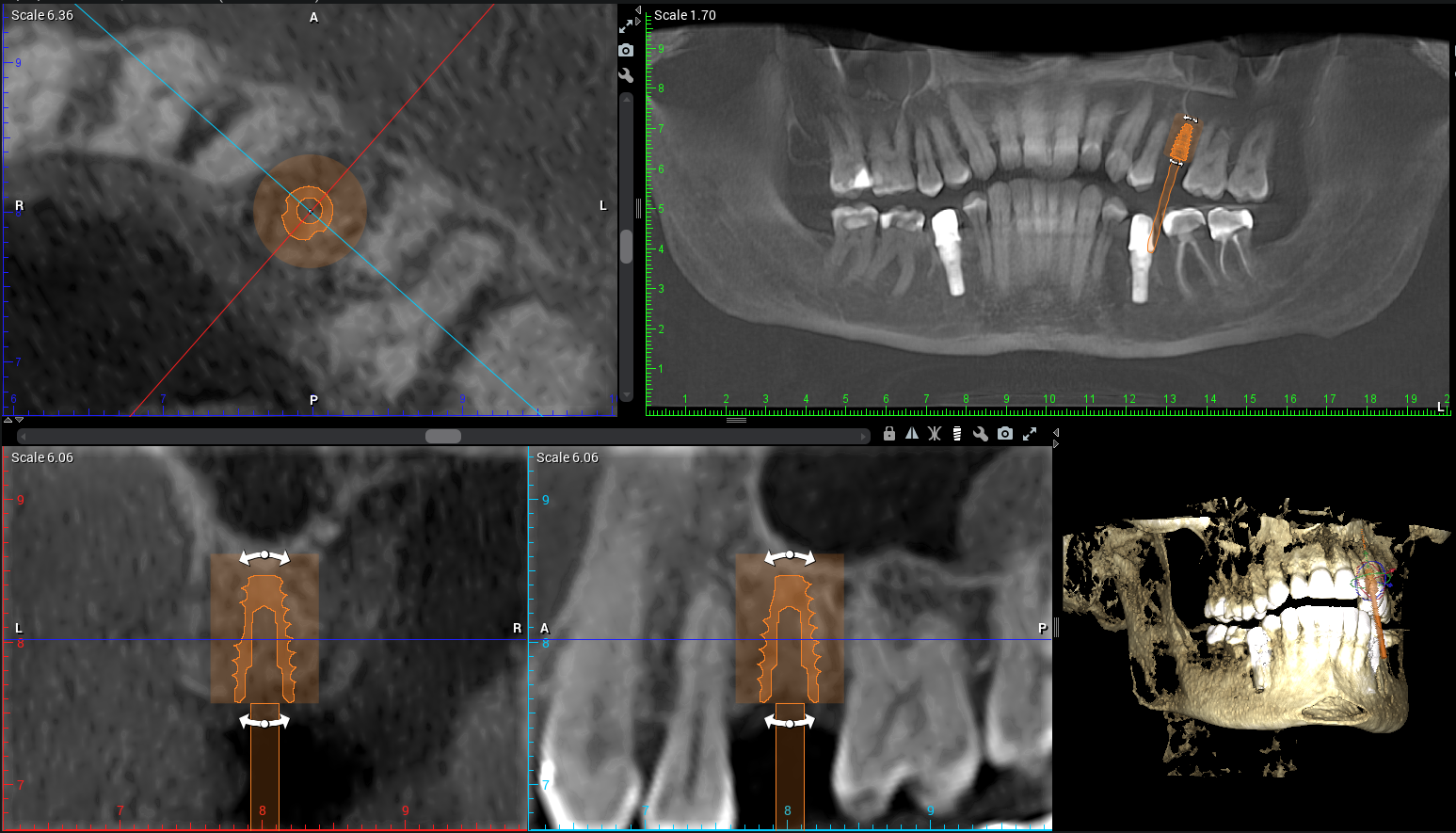Missing a Tooth? Why Dental Implants May Not Be Your Best Option!
Missing a tooth? You’re not alone—but doing nothing about it can cost you more than you think. Here's how dental implants compare to dental bridges, dentures, and the risks of leaving it alone altogether.
What Happens If You Do Not Replace your missing tooth? 🦷
Sometimes, not replacing your tooth is a viable option!
We often recommend not replacing teeth, depending on which tooth and a patient’s unique situation. For example, a wisdom tooth or second molar may not be worth replacing. Or a tooth that already was not in your bite to begin with.
The obvious advantages to not replacing teeth are that it is easy, and free!
The risks are that losing a tooth may impacts your smile, jaw, bite, and long-term health.
Bone loss begins within 6–12 months after extraction (especially in molars)¹
Nearby teeth shift, which increases food getting caught between teeth. This may increase risk of decay, fractures, and gum disease.
Bite forces now transmitted to the rest of teeth in mouth, increasing structural risk on them, which can lead to fracturing
Bite misalignment can cause TMJ pain and uneven wear
Jaw structure shrinks over time—leading to facial sagging and aging appearance
Chewing becomes harder, affecting digestion and nutrition²
Bottom line: Not Replacing your tooth may be a good option for you! Just know that in some cases it May lead to more dental problems—and higher costs—down the road.
A dental implant and its parts
Dental Implant vs. Bridge vs. Partial Denture 🪥
🦷🔩 Dental Implant
Longevity: 20+ years expected
Bone Preservation: ✅ Maintains jawbone structure and natural gum esthetics
Affects Nearby Teeth: Does not require altering adjacent teeth
Stability: Feels like a natural tooth (fixed in bone)
Cost in St Charles, IL area: $4,500-$6,300
Why such a big price range? See factors influencing price on our dental implant price guide
Implant fees are usually not paid all at once due to timeline
Our fees for implant: $2,800. The crown and custom abutment: 3,300 = $6,100 total for implant, crown, and abutment. No hidden fees or surprises
Learn More: Learn more about dental implants at Teuscher Legacy Dental
🦷🔗🦷Dental Bridge
Dr Brayden explains the benefits and design of a fixed dental bridge
Definition: a toothless space replacement by anchoring artificial teeth to neighboring natural teeth.
Longevity: 5–15 years (~80% survival at 10 years)
Bone Preservation: Does not preserve bone
Affects Nearby Teeth: Requires drilling of neighboring teeth for support
Stability: Fixed in place, supported by bone
Cost in St Charles, IL area: $4,500-$6,100 usually lower total than implant.
Our fees for a dental bridge replacing one tooth: $5,100 (assuming no core build ups on adjacent teeth)
🧩 Removable Partial Denture
Dr Brayden explains different types of removable partial dentures and their benefits
Longevity: 5–20+ years (wide range due to variation in material and supporting teeth strength)
Bone Preservation: Does not preserve bone
Affects Nearby Teeth: Usually no effect, sometimes needs to compromise adjacent teeth
Stability: Removable; stability can vary depending on remaining teeth. Denture may shift or irritate gums, especially over time as bone remodels and changes
Cost: Lower upfront than bridge or implant, but may need repairs or replacements. Range may be $600-$3,000 depending on materials. There are a variety of types of removable partial dentures, some made more sturdy for longevity, some designed to only be temporary solutions.
A dental implant before and after
❌ Why NOT Choose a Dental Implant?
Up front cost is the biggest reason people choose other options.
Timeframe: total healing time for some implant cases approaches 9 months. But the timeline can depend on your unique case, and is often much shorter
Before the implant is ready, there are temporary tooth replacement options. Especially for front teeth!
Surgery: Some people are anxious about dental implant surgery
Metal allergy: This is very rare with titanium base implants. The titanium mixes are extremely well researched, including by medical prosthetic surgeons, so it is usually extremely safe. Usually, when patients have this concern, it isn’t a true allergy, but the patients prefer “no metal”. This is totally understandable. There are dental implants made of zirconia as an alternative, but they aren’t as well researched and harder to find.
💡 Why Would You Choose a Dental Implant?
Feels and functions most like a natural tooth
Preserves bone and facial structure³
No need to alter healthy teeth
One-time investment with what should be decades of value
Advanced implant planning technology at Teuscher Legacy Dental
⚠️ Risks & Success Rates of Dental Implants
Every procedure has risks—but implants are highly successful when placed by skilled clinicians.
Success rate: 94–98% with proper care¹
Risks include infection, nerve damage (rare), or implant failure (often due to smoking or poor hygiene)
Implants have lower long-term complication rates than bridges or dentures⁴
BUT: We have seen dentures and bridges last a LONG time too! It’s just risk!
“My whole family goes to Teuscher Legacy Dental... We are extremely pleased with the personalized, professional care. The addition of implant services has been godsend, saving us time and money from having the implant placed elsewhere.”
Teuscher Legacy Dental Can Help Answer Your Questions!
📚 Sources
Albrektsson T, et al. (1986). A 10-year follow-up of osseointegrated implants. Int J Oral Maxillofac Implants.
Misch CE. (2015). Dental Implant Prosthetics. Elsevier.
Esposito M, et al. (2007). Interventions for replacing missing teeth: different types of dental implants. Cochrane Database Syst Rev.
Goodacre CJ, et al. (2003). Clinical complications with implants and implant prostheses. J Prosthet Dent.




